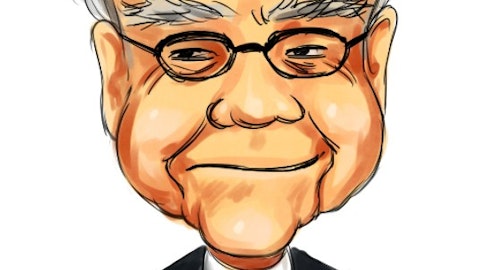Wal-Mart’s Growth Prospects & Expected Total Return
The job of management is to maximize long-term shareholder value.
Sometimes investing to maximize long-term gains can lead to short-term declines.
Wal-Mart’s management should be applauded for taking a long-term view and restructuring the business now instead of waiting.
Wal-Mart is investing in its:
– Employees
– Supply Chain
– Digital Capabilities
By April of 2016, all employees will earn $10 or more per hour. Wal-Mart is already seeing an increase in applications. Higher demand for Wal-Mart jobs will likely translate into less turnover, which will save the company money in the long-run.
In addition to wage raises, Wal-Mart is also investing in longer training time for its employees to provide better service for customers.
Infrastructure investments hurt short-term profits, but will strengthen the company’s price-based competitive advantage in the long-run. Wal-Mart’s investments in infrastructure will speed delivery to stores, reducing loss from expired items and perishables.
Wal-Mart Labs is the company’s tech hub. Wal-Mart Labs is based in San Bruno, California; not in Bentonville, Arkansas. The separate location shows Wal-Mart Labs autonomy from the corporate office.
Wal-Mart Labs handles the data science for Wal-Mart. The company is rapidly growing its digital sales. Wal-Mart now generates $12 billion in digital sales… And sales are growing at 17% annually.
The company is expecting revenue growth of between $45 and $60 billion over the next three years which comes to 3% to 4% a year.
Wal-Mart will also repurchase $20 billion in shares over the next 2 years. This is about 10% of the company’s market cap at current price.
Large share repurchases will partially offset Wal-Mart’s margin declines due to employee salary raises and digital investments. Margins are expected to fall over the next 2 years before normalizing and improving as digital sales scale.
Share repurchases should normalize at around 2% to 3% of shares outstanding a year over the long run.
Over the long-run, Wal-Mart shareholders should expect total returns of between 8% and 11% a year from:
– Dividend yield of 3%
– Revenue growth of 3% to 4% a year
– Share repurchases of 2% to 3% a year
– Margin improvements of 0% to 1% a year
Wal-Mart’s Stellar Recession Performance
Wal-Mart Stores, Inc. (NYSE:WMT) performed exceptionally well during the Great Recession of 2007 to 2009. The company’s earnings-per-share each year through this difficult time are shown below:
– 2007 earnings-per-share of $3.16
– 2008 earnings-per-share of $3.42
– 2009 earnings-per-share of $3.66
For comparison, the S&P 500’s earnings-per-share over the same period are shown below:
– 2007 earnings-per-share of $75.20
– 2008 earnings-per-share of $16.89
– 2009 earnings-per-share of $56.33
As you can see, Wal-Mart rolled through the Great Recession as if it didn’t even happen. The average business in the S&P 500 suffered significant earnings declines.
The reason Wal-Mart did so well during the Great Recession is its reputation for low prices. When hard times set in, consumers stretch their dollars farther. Wal-Mart has a reputation for selling merchandise at ‘everyday low prices’.
In 2008, The S&P 500 fell 37.0%… Wal-Mart stock gained 21.6% due to higher earnings and an influx of investors fleeing to one of the only businesses that was still thriving.
The company’s business model makes Wal-Mart an ideal recession stock for investors.




